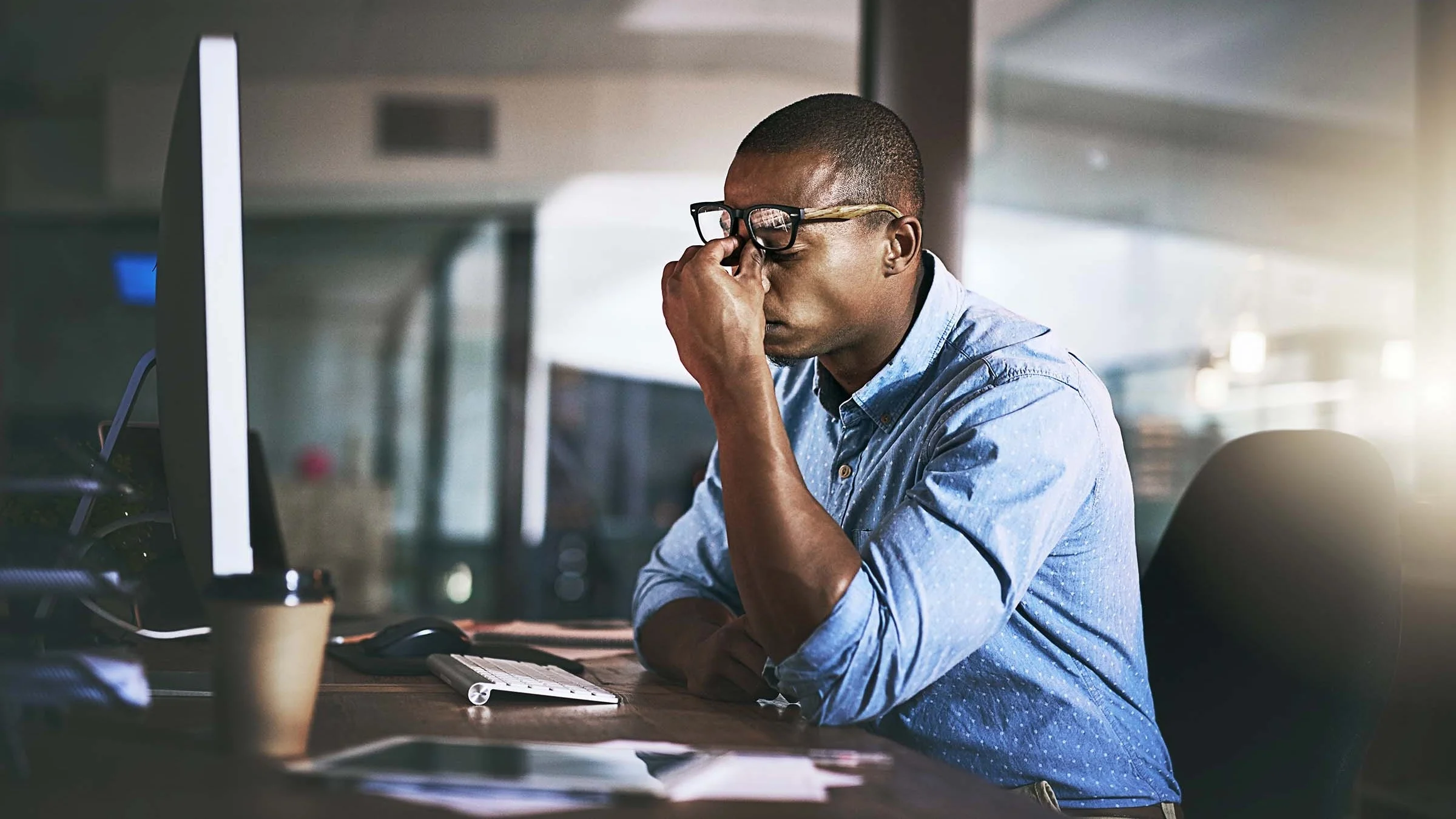Key takeaways:
Photophobia (sensitivity to light) is a common eye condition that many people experience every day.
If you have photophobia, don’t avoid sunlight altogether or wear sunglasses indoors. Over time, this can actually make your light sensitivity worse.
Treatment options depend on what’s causing the sensitivity, but tinted sunglasses for outdoor use can help relieve symptoms.
Photophobia is an eye condition that causes you to be extra sensitive to light. People who experience migraines or have other medical conditions often have photophobia. Managing photophobia isn’t easy — after all, it’s impossible to avoid bright light and sunlight all the time.
If you’re experiencing photophobia, you may be looking for help managing your symptoms. Here’s everything you need to know about living with photophobia.
Photophobia vs. photosensitivity: What are they, and how are they different?
Sometimes people use the terms “photophobia” and “photosensitivity” interchangeably. But they’re not actually the same thing. In fact, photosensitivity doesn’t really mean that your eyes are sensitive to light.
Photosensitivity is an immune reaction to ultraviolet (UV) rays from sunlight or other lights. Photosensitivity reactions can cause:
Rashes
Joint pain
Fatigue
Flu-like symptoms
People with autoimmune conditions — like lupus — often experience photosensitivity. Certain medications — like birth control pills, antibiotics, or diuretics — can also cause photosensitivity. You’ll notice that increased sensitivity to light or eye pain with exposure to light aren’t on the list of symptoms. That’s because they’re symptoms of photophobia, which is a separate condition.
But like photosensitivity, photophobia is usually a symptom of an underlying medical condition.
Can dry eye cause photophobia? Learn the signs and symptoms of dry eye, a common eye condition.
A sign of uveitis? Light sensitivity can be a sign of uveitis, a serious eye condition. Here’s how to tell if you have uveitis.
Untreated migraines can cause photophobia. If you need help getting migraines under control, take a look at our migraine treatment guide for the best options.
What are the symptoms of photophobia?
In addition to light sensitivity or eye pain with light exposure, symptoms of photophobia include:
Squinting, especially when exposed to light
Discomfort or pain when exposed to light
Headache
Neck stiffness
- Acular LSKetorolac
- Lotemax GelLoteprednol
- DurezolDifluprednate
People with photophobia also sense regular lighting as extremely bright. You might feel like a room is very brightly lit, while your friends or family might think the room is comfortable or even dimly lit. The headlights from other cars might also bother you more when driving at night.
Other things you might find yourself doing if you have photophobia include:
Avoiding bright light (both sunlight and electric light)
Keeping rooms dim
Turning down the brightness on your phone or computer

What conditions are associated with photophobia?
There are several conditions that are associated with photophobia. And surprisingly, many of them aren’t primary eye conditions.
Eye conditions where photophobia is a primary symptom include:
Dry eye
Optic nerve disease
Keratoconjunctivitis
People with depression, seasonal affective disorder, and agoraphobia also commonly report photophobia.
Can light sensitivity be neurological?
Neurologic conditions such as traumatic brain injury, meningitis, and migraine are also associated with light sensitivity. In fact, photophobia is a major criteria for diagnosing migraines, and 80% of people with migraines have photophobia.
What causes photophobia?
It’s not clear what causes photophobia. While some medical conditions are associated with photophobia, not everyone with these medical conditions develops light sensitivity. It’s also possible to experience photophobia if you don’t have one of these medical conditions.
Scientists are studying the relationship between different parts of the brain that perceive light. They’re also investigating how the trigeminal nerve may play a role in photophobia. But these relationships aren’t apparent, and it will take more research before the exact causes of photophobia are discovered.
Are light-colored eyes more sensitive to light? What color eyes are most sensitive to light?
People with eyes that are lighter in color are usually most sensitive to light because they have less melanin. Melanin is protective against UV light. People with lighter eyes, like blue eyes, can’t block excess light.
But many people with lighter eyes never experience photophobia, and many people with darker eyes do have light sensitivity. This is just another layer to the mystery of photophobia.
How is photophobia treated?
Treating photophobia can be tricky. If you have a condition associated with photophobia, your healthcare professional will treat that condition. The hope is that by treating the underlying condition, your light sensitivity will improve.
For example, if you have migraines, your healthcare professional will work with you to get your migraines under control. Your light sensitivity should get better once your migraines improve. The same is true for an eye condition. If you have dry eye, your eye care professional might recommend dry eye treatments like artificial tears and prescription eye drops. The hope is that if your dry eye is better, your photophobia will also get better.
While not common, some medications can cause photophobia. Let your healthcare professional know what medications you’re taking. If one of them causes photophobia, your healthcare professional may recommend a different medication or lower your dose. This may improve your light sensitivity.
If you don’t have an underlying condition, or if treating your underlying condition doesn’t work, things get trickier. There’s no medication or treatment that specifically relieves light sensitivity. There are some things you can do to help your symptoms. But unfortunately, there’s no cure.
What are some daily tips to manage sensitive eyes?
While photophobia is a difficult symptom to live with on a daily basis, there are things you can do to improve your sensitivity:
When possible, avoid prolonged sun exposure. Wear a hat with a wide brim while outdoors to shade your eyes.
Avoid exposure to fluorescent lighting, which can be harsh and have a flicker. If you have fluorescent lights at home, consider replacing them with LED lights.
Wear sunglasses when you’re outside, especially on sunny days.
Don’t avoid light altogether, and don’t wear sunglasses indoors. Wearing dark glasses all the time can make your eyes even more light sensitive.
Try pink-tinted (FL-41) glasses, which block specific wavelengths of blue light. These glasses have been shown to help with migraine-associated photophobia. Work with an eye care professional to order these lenses to make sure they properly block blue light.
Consider blue-light filters and antiglare devices for your phone and other screens. Some apps have a built-in blue-light filter — you just have to enable it.
When should I see a healthcare professional for photophobia?
Light sensitivity can be a sign of a new medical condition or a sign that an underlying medical condition is getting worse. You should get medical care as soon as possible if light exposure is giving you eye pain.
Sometimes photophobia can be a sign of a serious infection, like meningitis. Seek immediate medical care if you have:
Fever
Headache
Neck pain or stiffness
Confusion
Tiredness
Vomiting
Irritability
Unusual rash
You should also get immediate medical attention if you have new vision changes or experienced an eye injury.
Frequently asked questions
Eye injuries and serious eye conditions can cause sudden sensitivity to light. Get medical care if you’re experiencing a sudden onset of photophobia.
Sometimes. Eye allergies (allergic conjunctivitis) can lead to redness, itching, and eye irritation. You may experience light sensitivity as well.
Not directly. Dry eye has been linked to corneal changes and astigmatism, though it’s not clear whether dry eye directly causes astigmatism. But dry eye can cause photophobia. Astigmatism can also lead to eye-strain, which people may experience as discomfort especially after looking at screens.
Eye injuries and serious eye conditions can cause sudden sensitivity to light. Get medical care if you’re experiencing a sudden onset of photophobia.
Sometimes. Eye allergies (allergic conjunctivitis) can lead to redness, itching, and eye irritation. You may experience light sensitivity as well.
Not directly. Dry eye has been linked to corneal changes and astigmatism, though it’s not clear whether dry eye directly causes astigmatism. But dry eye can cause photophobia. Astigmatism can also lead to eye-strain, which people may experience as discomfort especially after looking at screens.
The bottom line
Photophobia is a symptom that describes light sensitivity. If you notice your eyes are now more sensitive to light, talk with your healthcare professional. Photophobia can be a symptom of a medical condition like migraines, certain eye conditions, or a mental health condition.
The best way to treat light sensitivity is to figure out if another condition is playing a role — and then treating that condition. While light sensitivity can be a difficult symptom to live with, there are many things you can do to manage it, including protecting your eyes from bright lights and using FL-41 filter glasses.

Why trust our experts?


References
Digre, K. B., et al. (2013). Shedding light on photophobia. Journal of Neuro-Ophthalmology.
Doran, M., et al. (2024). Photophobia: looking for causes and solutions. American Academy of Ophthalmology.
Headache Classification Subcommittee of the International headache Society. (2004). The International Classification of Headache Disorders: 2nd edition. Cephalalgia.
Lupus Foundation of America. (2023). Tips for managing sensitivity to light.
Modern Optometry. (n.d.). Neurological mechanism of trigeminal nerve pain.
National Eye Institute. (2023). Blepharospasm.














